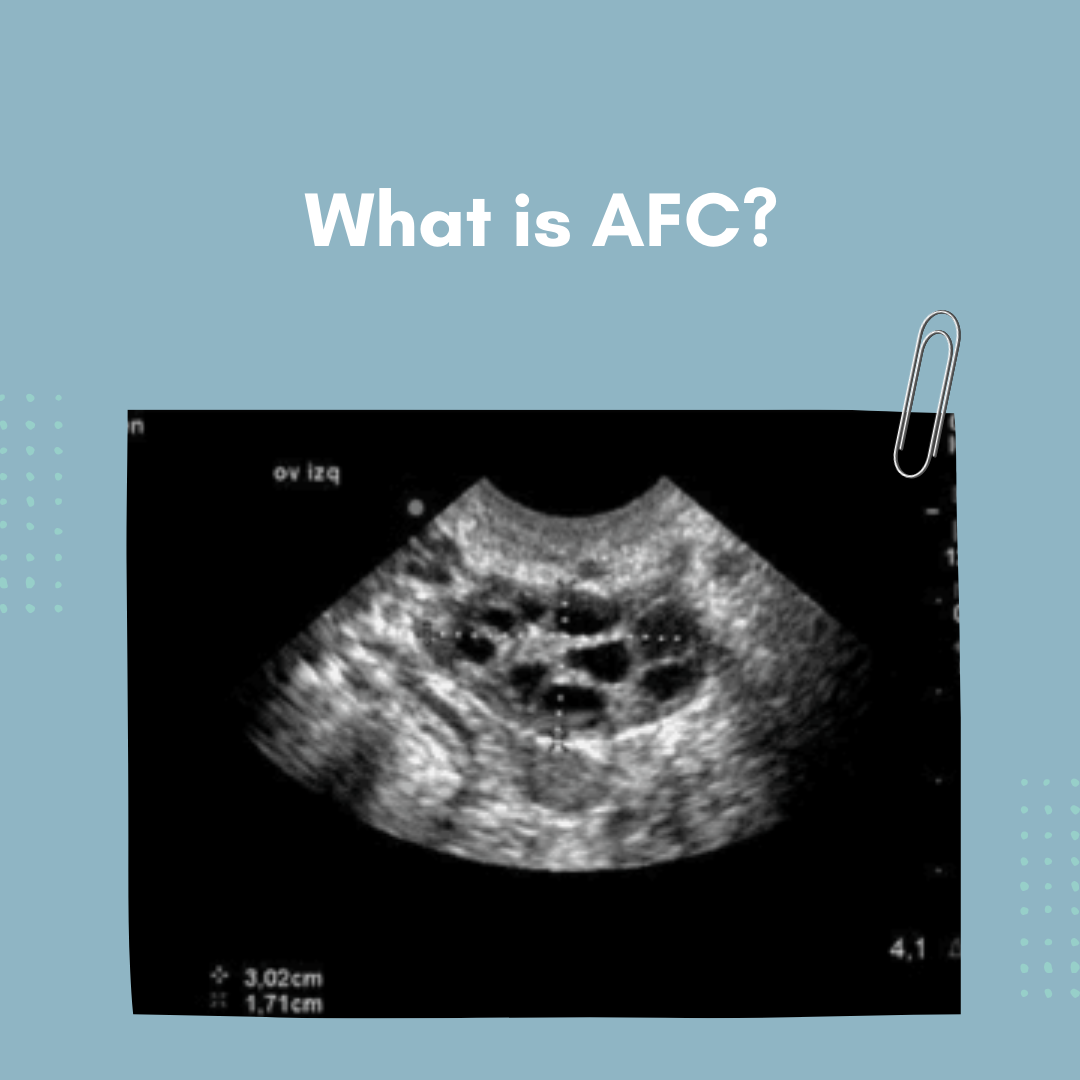In the world of assisted reproductive technology, it is vital for embryologists and patients alike to make use of tools that can help them with the right precision and knowledge.
One such tool that plays a pivotal role in this journey is the Antral Follicle Count (AFC).
With this test, it’s possible to:
- Estimate a woman’s ovarian reserve
- Check the number of growing follicles for a particular cycle
- Monitor the growth of follicles post-medication, for an IVF cycle
So, how is AFC done, and how can it be beneficial for patients?
Let’s dive into it, with this article!
Table of contents
- What are Antral follicles?
- What is AFC?
- Who is AFC for?
- How is AFC done?
- When is AFC used?
- Implications of AFC in IVF
- AFC: A vital tool to assess your fertility
What are Antral follicles?
When females are born, they have millions of primordial follicles in their ovaries. As they age, this number declines. This is due to the fact that a select number of primordial follicles are selected to grow and develop each month, into Antral follicles, and finally into graafian follicles that release the mature egg.
Now these Antral follicles are almost at the last stage of growth, when, every month, a single Antral follicle is selected as “follicle of the month”. The rest undergo cell death, and this chosen one becomes the Graafian follicle to release the mature egg.
When at the Antral follicle stage, they are measured using ultrasound technology during the early days of a woman’s menstrual cycle.
What is Antral Follicle Count?
Antral Follicle Count (AFC) is a test done to assess the number of antral follicles present in a woman’s ovaries via ultrasound technology.
The antral follicles serve as a vital indicator of a woman’s ovarian reserve, which is the quantity and quality of her remaining eggs. The AFC measurement helps embryologists and healthcare providers assess the potential for a successful IVF treatment cycle.
Who is AFC for?
AFC can be for:
- Populations that want to know the status of their reproductive health
- Patients who have started their IVF cycles
How is AFC done?
AFC is a simple procedure done via transvaginal ultrasound. The ovarian volume of both ovaries is checked, and using the ultrasound monitor, the size and number of antral follicles in both ovaries is measured. These follicles could vary in size from 3-10mm.
When is AFC Used?
AFC is used at several key points in the IVF journey:
- Fertility Assessments: Before starting with an IVF treatment cycle, AFC helps healthcare providers evaluate a woman’s ovarian reserve. This is done as a part of a routine IVF checkup. This assessment guides decisions about the optimal treatment protocol and medication dosages.
- IVF Treatment Planning: AFC plays a pivotal role in determining the appropriate dosage of fertility medications. Precise and personalized medication doses may help better stimulate the development of multiple follicles and, consequently, retrieve multiple eggs during egg retrieval.
- Ovarian Response Prediction: During an IVF cycle, AFC measurements can be repeated to monitor how a patient is responding to the medication. This data from the stimulated cycle allows healthcare providers to make necessary adjustments to the treatment plan to improve the chances of success.
Implications of AFC in IVF
The implications of AFC in IVF are profound and they not only help the patient but also the healthcare team involved.
AFC enables healthcare providers to tailor IVF protocols for individual patients. This personalized approach improves the chances of a successful outcome and minimizes the risk of overstimulation. It also helps them predict the patient’s response to medication and allows real-time adjustments. For patients, it helps them have realistic expectations of their body’s response to medications, how their current IVF cycle may go, and an overall understanding of their ovarian reserve.
What is a good AFC count?
When it comes to the AFC test, there’s no specific magic number that determines the good or bad, but rather a spectrum that helps us assess the ovarian reserve.
On average, someone in the 25 to 35 age gap can expect an AFC of 15, and 35 to 45 year-olds can expect around 8-10, and if you’re above 45 years old, even a count of 4 is considered normal, given that you’re approaching menopause.
AFC: A vital tool to assess your fertility
In conclusion, Antral Follicle Count (AFC) is a vital tool in the world of IVF. It empowers both embryologists and patients with valuable information that can majorly impact the success of your IVF journey.
As the field of reproductive medicine continues to advance, AFC remains a cornerstone and a valuable addition to understanding and personalizing treatment plans. Whether you’re an embryologist seeking to optimize treatment plans or a patient navigating the path to parenthood, AFC is a key player in your IVF journey.
Want to listen to this a podcast instead? You can do so here. 😎
Meet the author
